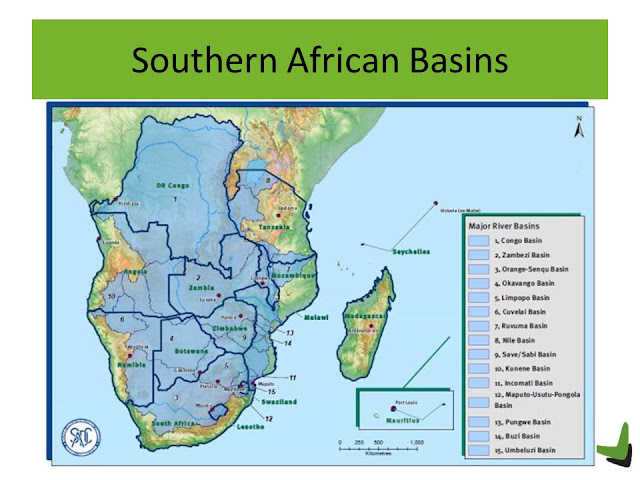Effective water management strategies for environmental change adaptation. Part I - Drip irrigation in Senegal
As we have seen through out this blog is that water resources in Africa, both surface and subsurface are being increasingly stretched due to the environmental change that is occurring on the continent. Whilst the effects are highly spatially and temporally variable, it is pretty clear that every nation has a commitment to its population who rely on water, to implement effective and equitable water management strategies to maintain and improvement water security. This post is leading on from last weeks in-depth look at the externalities of poor water management, so again go back and read that first! This post will highlight three individual case studies that can be applied to a range of locations, highlighting its potential for successful and effective water management. These will be split into three separate posts so stay tuned for those in the coming week.
However, the consequences of not implementing a good water management infrastructure is pretty dire, so it is a matter of urgency that a coherent and strategic water policy infrastructure is built (Slaughter, 2018).
 |
| Figure 1.1 - Drip irrigation being implemented on small holder farm in southern Senegal. (Credit GODAN) |
However, the consequences of not implementing a good water management infrastructure is pretty dire, so it is a matter of urgency that a coherent and strategic water policy infrastructure is built (Slaughter, 2018).
The first of the case studies that this post will look at is based on agriculture. This sector is of the upmost importance all across Africa, as it is the main economic output, whilst being vitally important domestically as the increasing population in relying on ever more food production. Irrigated agriculture is far more productive than rain fed. However, unmanaged irrigation can be extremely wasteful and inefficient. This highlights the need for proper management of irrigation for agriculture. This can be found in the form of drip irrigation; an effective tool that supplies soil with moisture as on a constant timescale, but in small amounts, maintaining soil moisture, but not over watering leading to waste via evapotranspiration. The youtube video below illustrates how it works.
Implementing this irrigation strategy allows farmers to grow more successfully all year round, as their dependence on irregular rainfall is decreased. This not only improves profitability via longer growing and less varied growing seasons, but also allows for higher value crops to be grown. As highlighted in the video, farmers in the Senegalese village can grow fruits and vegetables rather than grains. This improvement in efficiency and value not only will provide increased food production in this village and across Africa, but it will lead to increased incomes for many previously subsidence individuals and communities. Places where they were not selling any of their agricultural products can now sell to the market their produce, providing potentially a steady income that they wouldn't have ordinarily have if they were relying on rain fed agriculture and thus living as a subsidence farmer.
If you look at a quantitative data, drip irrigation. Figure 1.1 below highlights some of the beneficial results that have been found in research on the effects of drip irrigation in Africa. If these beneficial results can be upscaled from smallholder case studies to the whole of the African agricultural sector (where applicable and effective), then substantial gains could be made not only increased agricultural output, but improved efficiency of water usage. Hence, there could be less pressure on water security as there would be a decrease in wasteful irrigation practises.
Overall, all this data and information highlights how effective effective drip irrigation water management strategies can be in reducing water consumption and thus improving water security, whilst having the added benefit of increasing agricultural output and value. This illustrates that there can be effective and equitable water management strategies that prioritise both water resources and economic growth. Therefore, it highlights clearly that this strategy is highly effective and an incredibly useful water management tool in any governments water and agricultural arsenal.
In the next blog we're going to look at how effective management of transnational water resources can help adapt to the increasing pressure of environmental change on water security and availability.
If you look at a quantitative data, drip irrigation. Figure 1.1 below highlights some of the beneficial results that have been found in research on the effects of drip irrigation in Africa. If these beneficial results can be upscaled from smallholder case studies to the whole of the African agricultural sector (where applicable and effective), then substantial gains could be made not only increased agricultural output, but improved efficiency of water usage. Hence, there could be less pressure on water security as there would be a decrease in wasteful irrigation practises.
 |
| Figure 1.1 - Beneficial effects of commercialising drip irrigation in small holder markets |
In the next blog we're going to look at how effective management of transnational water resources can help adapt to the increasing pressure of environmental change on water security and availability.


Thanks for this stimulating post. I encourage you to engage more fully with a peer-reviewed literature on this (and other post) topics. How likely is it that a smallholder farmer will see a return on their investment in drip irrigation? How would they fund the capital costs of implementation? What would be the return period of paying for such an investment? Can you explore the move from the theory presented in Figure 1.1 to the reality of implementation?
ReplyDelete